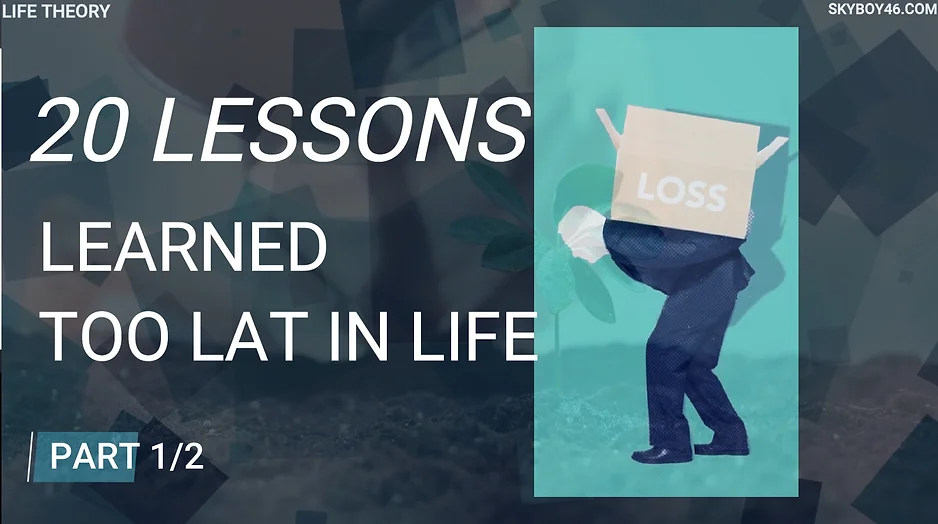Don’t Want To Read?
Watch/Listen To The Full Video on YouTube
We often think planting trees is the ultimate climate solution—but what if we’re wrong? In Scotland’s Flow Country, a well-intentioned attempt to reforest the land ended up destroying one of the world’s most powerful carbon sinks. The lesson is clear: planting in the wrong soil doesn’t just apply to nature—it’s a mistake we make in life, too. How many times have we pursued the wrong path, thinking it was the answer, only to realize too late that we were suffocating our own potential?
SUBSCRIBE: https://www.youtube.com/@LifeTheory46
Planting in the Right Soil When Intent Isnt Enough – Life Stories 289
Let’s ask a question that might seem a bit offbeat: is planting trees really the magic bullet for climate change? With all the headlines praising reforestation and the surge in tree-planting commitments, it’s tempting to think we’ve found the perfect remedy. The U.S. has pledged to plant a billion trees over the next decade, and many are convinced this will somehow counterbalance the pollution generated from all the energy, manufacturing, agriculture, and countless other activities that sustain our modern lives. If only it were that simple.
Take a look at the far reaches of northern Scotland, where a sprawling ecosystem known as Flow Country stretches across Caithness and Sutherland. Covering an area of about 4,000 square kilometers, this blanket bog seems, at first glance, like a wasteland. The water is dark and spongy, emitting a smell that’s less than inviting, and the vegetation appears like it’s on the brink of decay. The kind of place that doesn’t exactly inspire conservation efforts. Yet, these seemingly dreary bogs hold secrets that could change our understanding of ecological balance.
Within this murky landscape lies peat, a crumbly, dark brown substance formed from layer upon layer of decomposed organic matter, built up over thousands of years. In some places, it extends nearly 30 feet deep, with each meter taking a millennium to form. For all its unassuming appearance, peat performs a task that’s nothing short of extraordinary—it captures and stores carbon, one of the primary contributors to our ecological footprint. While forests are often hailed as the ultimate carbon sinks, peatlands can store 10 to 15 times more carbon in the same area. In Flow Country, this quiet work of carbon absorption has been ongoing for centuries, shielding us from our own environmental recklessness.
But then came the allure of tree planting. Investors, lured by the potential for reforestation, set their sights on Flow Country. They began draining the bogs and planting non-native, fast-growing trees, believing they were aiding the fight against climate change. However, beneath this well-intentioned activity, a different story was unfolding. Richard Lindsay, a scientist with the University of East London’s sustainability institute, was meticulously documenting the area’s biodiversity. Through many summers of fieldwork, his team revealed that the bogs were far from desolate wastelands. They were vibrant wetlands, housing unique ecosystems that thrived precisely because of the peat. Yet, as forestry companies tore up the landscape and introduced alien tree species, Flow Country began to die.
The irony was bitter. More than 150,000 acres of valuable wetlands were ruined by the very trees meant to heal the environment. Not only did the non-native species fail to grow as intended, but they also drove out native wildlife and damaged the precious peat that had stored so much carbon. This ecological blunder stands as a stark reminder: planting the wrong thing, in the wrong place, can wreak havoc.
Now we know better. We’re more cautious about where we plant, recognizing that tree placement is far more complex than just picking a spot on a map. But it took a hard lesson for us to get here. Sometimes, as humans, we become so captivated by a solution or trend that we rush ahead without fully understanding what we’re getting into. Even when we have the best intentions and all the resources we could hope for, our eagerness can lead to costly mistakes. Impact, not just intent, is what truly matters.
Think about your own life. Have you ever chased after something just because everyone else was doing it? Maybe you followed friends to college, choosing courses that weren’t right for you, only to realize three years in that you loathed the subject. Or perhaps you drifted into partying, alcohol, or other habits because they seemed cool at the time, only to find yourself trapped while others moved on. It’s surprisingly easy to plant your figurative trees in the wrong soil, pouring time and energy into pursuits that end up suffocating the parts of you that mattered most.
Before diving into any new endeavor, it’s crucial to understand not only the environment you’re entering but also your own needs and desires. Resist the temptation to follow every shiny trend or adopt the beliefs of whoever you happen to be talking to. If it doesn’t genuinely resonate with you or serve your growth, it’s a recipe for failure. You’ll find yourself stuck in pursuits that drain you instead of enriching you, disrupting the balance of your life.
The areas of your life that might seem unattractive or unimportant—the parts you may be tempted to change or discard—are often doing more for you than you realize. They’re your personal peatlands, absorbing the mistakes and giving you the space to grow. They’re quietly working in your favor, waiting for you to recognize their value. So, before you plant your trees, make sure you’re choosing the right soil.
–> Read More Life Stories Here:
https://www.lifetheory.us
https://www.lifetheory.eu
Buy all of our Life Stories & Our Premium Learning Packs. Listen or Read to them anytime you want. Have them Forever.
You can get each monthly lesson on our website at https://www.skyboy46.com/store
SHARE THIS STORY
Visit Our Store
SHOP NOW
www.skyboy46.com & www.myskypet.com
Designed For Pet Lovers & Introverted Souls
Sport, Hobbies, Motivation, Music & Art






~EXPLORE MORE~
www.linktr.ee/skyboy46


